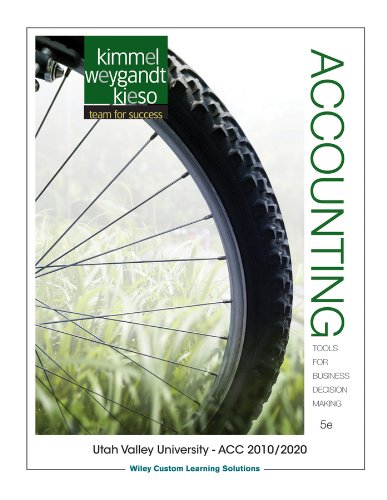Schultz Electronics manufactures two large-screen television models: the Royale which sells for $1,600, and a new model,
Question:
Schultz Electronics manufactures two large-screen television models: the Royale which sells for $1,600, and a new model, the Majestic, which sells for $1,300. The production cost computed per unit under traditional costing for each model in 2014 was as follows.
Traditional Costing Royale Majestic Direct materials $ 700 $420 Direct labor ($20 per hour) 120 100 Manufacturing overhead ($38 per DLH) 228 190 Total per unit cost $1,048 $710 In 2014, Schultz manufactured 25,000 units of the Royale and 10,000 units of the Majestic. The overhead rate of $38 per direct labor hour was determined by dividing total expected manufacturing overhead of $7,600,000 by the total direct labor hours (200,000)
for the two models.
Under traditional costing, the gross profit on the models was Royale $552 or
($1,600 2 $1,048), and Majestic $590 or ($1,300 2 $710). Because of this difference, management is considering phasing out the Royale model and increasing the production of the Majestic model.
Before finalizing its decision, management asks Schultz’s controller to prepare an analysis using activity-based costing (ABC). The controller accumulates the following information about overhead for the year ended December 31, 2014.
Activity-
Expected Based Estimated Use of Overhead Activities Cost Drivers Overhead Cost Drivers Rate Purchasing Number of orders $1,200,000 40,000 $30/order Machine setups Number of setups 900,000 18,000 $50/setup Machining Machine hours 4,800,000 120,000 $40/hour Quality control Number of inspections 700,000 28,000 $25/inspection.
The cost drivers used for each product were:
Cost Drivers Royale Majestic Total Purchase orders 17,000 23,000 40,000 Machine setups 5,000 13,000 18,000 Machine hours 75,000 45,000 120,000 Inspections 11,000 17,000 28,000 Instructions
(a) Assign the total 2014 manufacturing overhead costs to the two products using activitybased costing (ABC) and determine the overhead cost per unit.
(b) What was the cost per unit and gross profi t of each model using ABC costing?
(c) Are management’s future plans for the two models sound? Explain.AppendixLO1
Step by Step Answer:

Accounting Tools For Business Decision Making
ISBN: 9781118771112
5th Edition
Authors: Kimmel, Wetlands, Kieso





